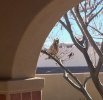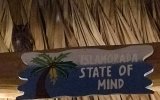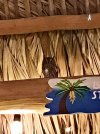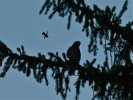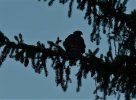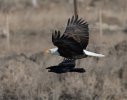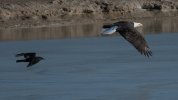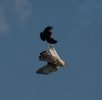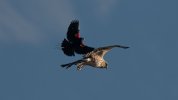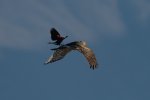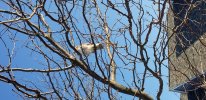Thanks! I mean - I have countless photos of them with wings half out of the frame and whatnot, but I've been making myself practice more and more and some of them turn out at least! With my previous camera, it was nearly hopeless to get a BIF in focus so I just wouldn't bother. Having a camera that can do it, the next trick was improving my reaction times and instinct to grab the camera and try. So I try to practice with gulls and pipits and everything that flies by to keep looking at the bird and pull the camera up to my eye and try to get it in focus, even if I don't actually take photos.Such beautiful photos! Very good framing for all the BIF shots too. I must get out with my camera this summer and see what birds I can find. Make the most of the off season and all that
And honestly, in the process I've developed an appreciation for gulls - I especially like the juvenile/immature birds with their intricate patterns. And they definitely cooperate more than most birds with flying around certain areas and giving me lots of opportunities.
 There is a specific pond out in the wetlands area where we have a lot of Pied-Billed Grebes fishing and the gulls will circle around overhead hoping to dive bomb them and steal a fish (and occasionally they get one). Usually the grebes see them coming and dive away with their prize.
There is a specific pond out in the wetlands area where we have a lot of Pied-Billed Grebes fishing and the gulls will circle around overhead hoping to dive bomb them and steal a fish (and occasionally they get one). Usually the grebes see them coming and dive away with their prize.It is definitely a great off-season/COVID activity. I can happily be out solo or with friends, in lots of weather conditions and enjoy my time outdoors regardless.
And I'd love to see your New Zealand wildlife!
 It's definitely on our travel wish list someday.
It's definitely on our travel wish list someday.
